Overseas media widely forwarded "International Sharp Review: 60% is a red line for the United States to competitors"
CCTV News:On August 10th, CCTV’s "International Sharp Review" broadcast an article entitled "60% is a red line for US competitors", which was reprinted by many overseas media.
August 10-11, German website of European Times, website of Radio Spain International, website of Radio We in Italy (facebook, twitter), website of Daily Morning News in India, website of Industrial News in Kazakhstan, facebook account of Jordan Global Radio, American Business News Network, Chinese PT portal, Chinese headline APP, Portuguese new newspaper APP(facebook, twitter), Many overseas media such as Nordic Times website, European Union Chinese website, European-Chinese United Times website, Africa Times website, West Africa online website, Japanese Chinese business website, Greek-Chinese website and Hungarian United Daily News website have forwarded them one after another. On August 12th, Hong Kong Ta Kung Pao and Wen Wei Po also published this article. The main reports are as follows:
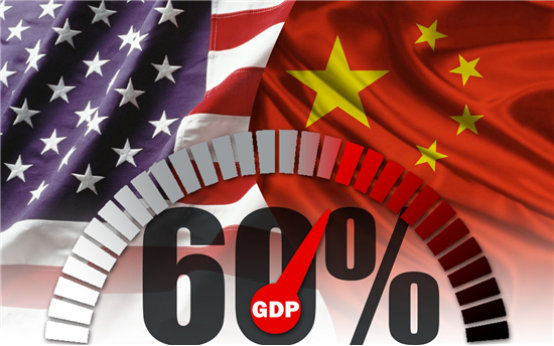
This week, the United States and China successively announced the list of 25% tariffs on each other’s $16 billion products, and decided to implement them on August 23. At this point, the first round of trade war, which was provoked by the United States and China had to counter, imposed tariffs on 50 billion US dollars of products, and finally settled down.
This tariff policy of the United States against China is ostensibly aimed at solving the "unfair trade" between the United States and China, which is due to internal political considerations in the United States, but its long-term deep-seated strategic purpose is also obvious, that is, the United States must suppress and contain its rapidly rising competitors in order to continue to safeguard dollar hegemony, dominate multilateral rules and obtain the greatest economic benefits.
The United States has only been founded for more than 200 years, but historically, it can be said that it is adept at containing competitors. In the last century, the United States had two anxieties of being overtaken by its rivals. Once, the GDP of the Soviet Union once exceeded 60% of that of the United States, and the United States increased its containment of the Soviet Union. At the same time, the Soviet Union also made fatal mistakes, which eventually led to its disintegration. The second time, Japan’s GDP once exceeded 60% of the United States, which alerted the United States and forced Japan to sign the "Plaza Agreement" and the yen to appreciate. In addition, the Japanese government misjudged the situation and implemented loose monetary and fiscal policies, resulting in a large amount of funds flowing to the stock market and real estate market. When the bubble burst, Japan fell into a "lost twenty years".
It can be seen that for the United States, 60% of GDP is a red line. Anyone who crosses this red line will be mercilessly killed by the United States, which has nothing to do with the challenger’s ideology, political system or whether he hides his strength and bides his time.
So, what means does the United States use to suppress its competitors? The Japan-US trade war is obviously a mirror. After World War II, Japan developed an export-oriented economy. In 1965, the trade between Japan and the United States showed a Japanese surplus for the first time. By 1994, the surplus had reached $65 billion, accounting for 43.16% of the total trade deficit of the United States. Japan’s economy has also continued to grow. In 1972, Japan’s GDP ranked second in the world, reaching 60% of American GDP in 1992 and 71.1% of American GDP in 1995.
In this context, Japan’s textile, steel, household appliances, automobiles, telecommunications and semiconductor industries have been involved in the trade war between Japan and the United States, and the target of US trade sanctions against Japan has been upgraded in turn with the adjustment of Japan’s industrial structure, especially for Japan’s automobile industry and semiconductor industry, which have reached the world advanced level. By 1989, the US Trade Representative had initiated 24 "301 investigations" against Japan, mostly in these two industries. In order to "shake hands and make peace" with the United States, Japan was forced to take countermeasures such as paying settlement money, investing and building factories in the United States, independently restricting exports and increasing imports, and reducing excess capacity.
However, the trade war has not weakened Japan’s industrial competitiveness. As a result, the United States has managed to continue to weaken Japan’s competitive strength in the context of the widening trade deficit. In 1985, at the behest of the United States, the five major countries signed the Plaza Agreement, and the yen began to appreciate sharply. By 1988, Japan’s surplus with the United States had narrowed. But two years later, Japan’s surplus expanded again. Because the United States has not solved the fundamental problems of international division of production, its own industrial disadvantages and low savings rate, the trend of trade imbalance between the United States and Japan is difficult to reverse.
In 2014, China’s GDP accounted for more than 60% of the United States’ GDP for the first time, which exceeded the tolerance of the United States. In the eyes of the United States, China’s economic growth rate and potential are far greater than its former competitors, and it is likely to surpass the United States in the foreseeable future. In this context, it is inevitable that the United States will suppress China. In August, 2017, the United States officially launched the "301 investigation" against China, and in several published reports, it labeled China as a competitor, and its suppression of China was intensified.
However, China today is not Japanese at that time.
First of all, China has a huge domestic consumer market and new cooperation platforms such as "One Belt, One Road" based on the principle of "co-operation, co-construction and sharing". At that time, Japan relied heavily on exports, especially on the US and European markets. In the first seven months of this year, China’s total trade with countries and regions along the Belt and Road reached 4.57 trillion yuan, accounting for 27.3% of the total foreign trade, exceeding the total trade between China and the United States by 2.28 trillion yuan in the same period, with a growth rate of 11.3%.
Secondly, China has a stable political system and a long-term development strategy, while Japan lacked a stable political environment and a consistent economic policy. From 1989 to 2000 alone, Japan experienced four political parties in power, and the cabinet changed for nine or seven prime ministers. The disputes between parties and departments greatly affected the Japanese government’s judgment of the situation and the implementation of policies.
Third, China has the largest and most complete industrial system in the world, and has become a key node in the global industrial chain and supply chain. The deep participation in the global value chain will make the US tariff "stick" policy have a far greater impact on the United States than before. Take the American Apple Company as an example, about 31.5% of its 200 suppliers are from China; Basic Electronics Company, an American TV assembler, announced that it was forced to lay off 126 people and was about to close its factory in South Carolina because it could not bear the high price of parts imported from China since the trade war.
Both China and Japan are suppressed by the United States in the process of rapid rise, and the time node and the means of containment are similar, but the fate of the two countries will be completely different. The foundation of China’s development will not be shaken. As long as we have a correct understanding of the situation, grasp the general trend soberly and do our own thing well, China, an economic ship, will surely break through all kinds of obstacles and move on.
A number of overseas media forwarded "International Sharp Review" articles:

"European Times" German website forwarded on August 10, 2018
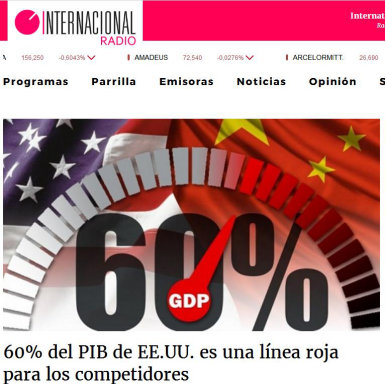
Radio Spain International website forwarded on August 10, 2018
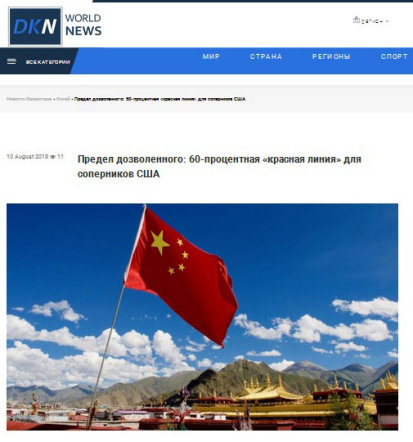
Kazakhstan’s "Industry News" website was forwarded on August 10, 2018
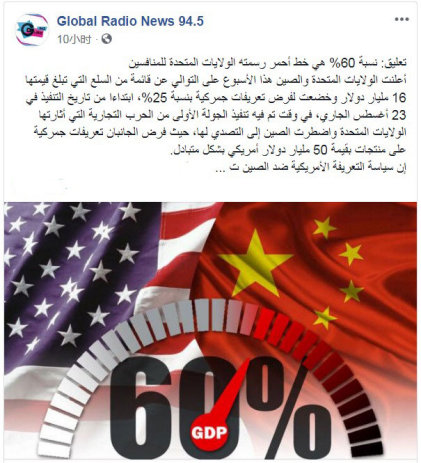
Jordan Global Radio facebook account forwarded on August 10, 2018
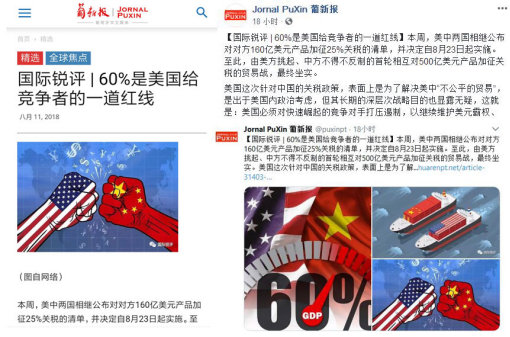
Portuguese news APP(facebook, Twitter) forwarded on August 11, 2018.
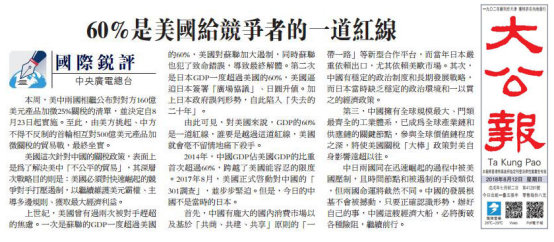
Hong Kong Ta Kung Pao was published on August 12, 2018
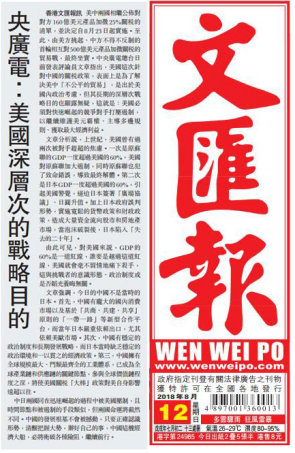
Hong Kong Wen Wei Po was published on August 12, 2018.